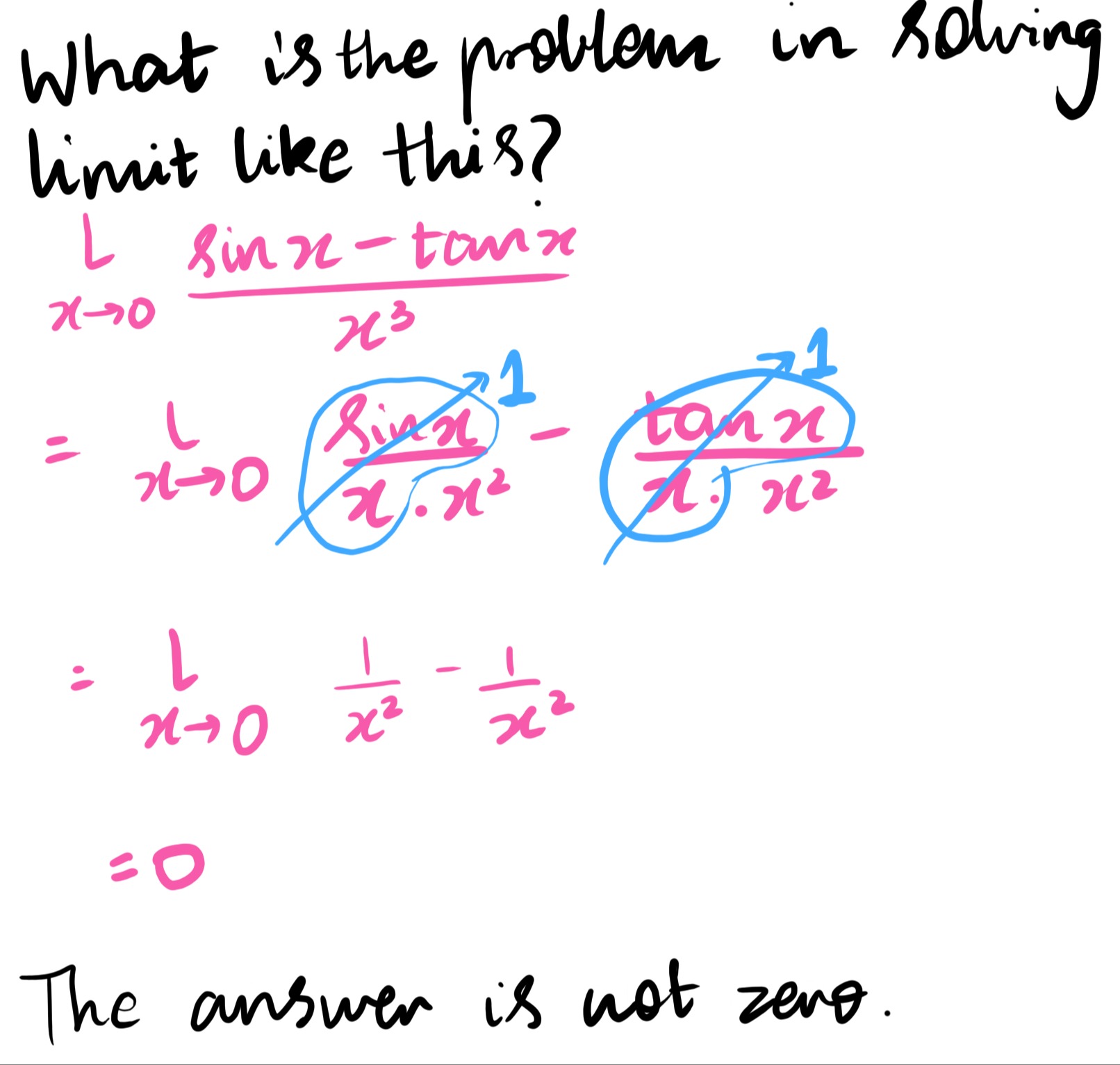Question
Question: What is the problem in solving limit like this? $\lim_{x\to0} \frac{sinx-tanx}{x^3}$ $= \lim_{x\to...
What is the problem in solving limit like this?
limx→0x3sinx−tanx
=limx→0x.x2sinx−x.x2tanx
=limx→0x21−x21
=0
The answer is not zero.

The problem is the incorrect application of limit properties for indeterminate forms.
Solution
The problem in the given solution is the incorrect application of limit properties. The limit of the difference of two functions is equal to the difference of their limits only if the individual limits exist and are finite. In this case, limx→0x3sinx=limx→0xsinx⋅x21=1⋅∞=∞ limx→0x3tanx=limx→0xtanx⋅x21=1⋅∞=∞ The original limit is of the indeterminate form ∞−∞. The step limx→0x.x2sinx−x.x2tanx=limx→0x21−x21 incorrectly assumes that xsinx and xtanx can be replaced by their limit 1 while the remaining factor x21 tends to infinity. This is not allowed when the expression is in an indeterminate form. The approximations sinx≈x and tanx≈x are only the first terms in their Taylor series expansions, and for the given problem with x3 in the denominator, higher order terms are significant.
To solve the limit correctly, we can use Taylor series expansions around x=0: sinx=x−3!x3+O(x5)=x−6x3+O(x5) tanx=x+3x3+O(x5) sinx−tanx=(x−6x3)−(x+3x3)+O(x5)=−6x3−3x3+O(x5)=−63x3+O(x5)=−2x3+O(x5) limx→0x3sinx−tanx=limx→0x3−2x3+O(x5)=limx→0(−21+O(x2))=−21
Alternatively, we can manipulate the expression: limx→0x3sinx−tanx=limx→0x3sinx(1−cosx1)=limx→0x3cosxsinx(cosx−1) =limx→0xsinx⋅x2cosx−1⋅cosx1 We know that limx→0xsinx=1 and limx→0cosx1=11=1. For limx→0x2cosx−1, we use the standard limit limx→0x21−cosx=21. So, limx→0x2cosx−1=−limx→0x21−cosx=−21. Therefore, limx→0x3sinx−tanx=1⋅(−21)⋅1=−21.
The problem in the given solution is the incorrect application of limit properties for indeterminate forms.
